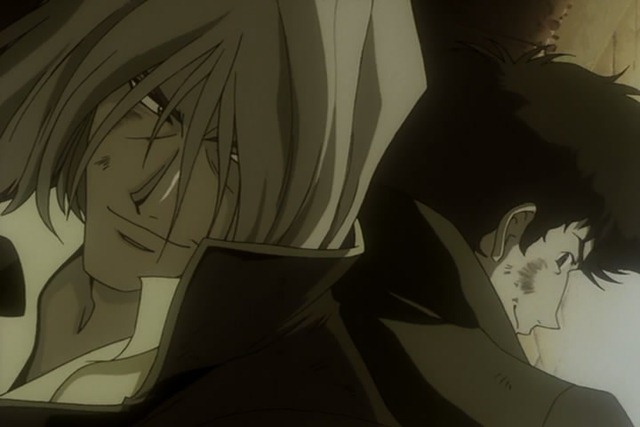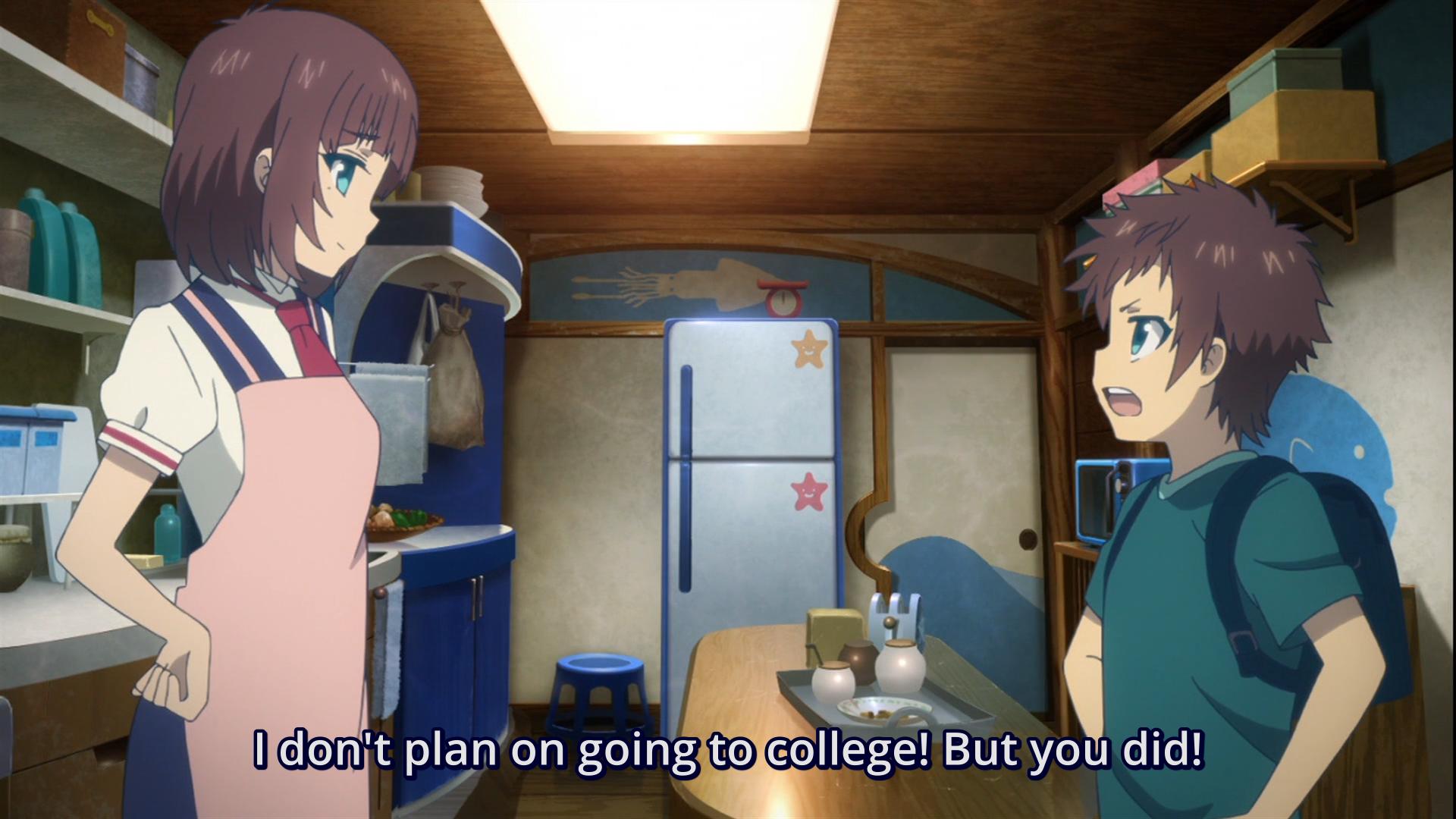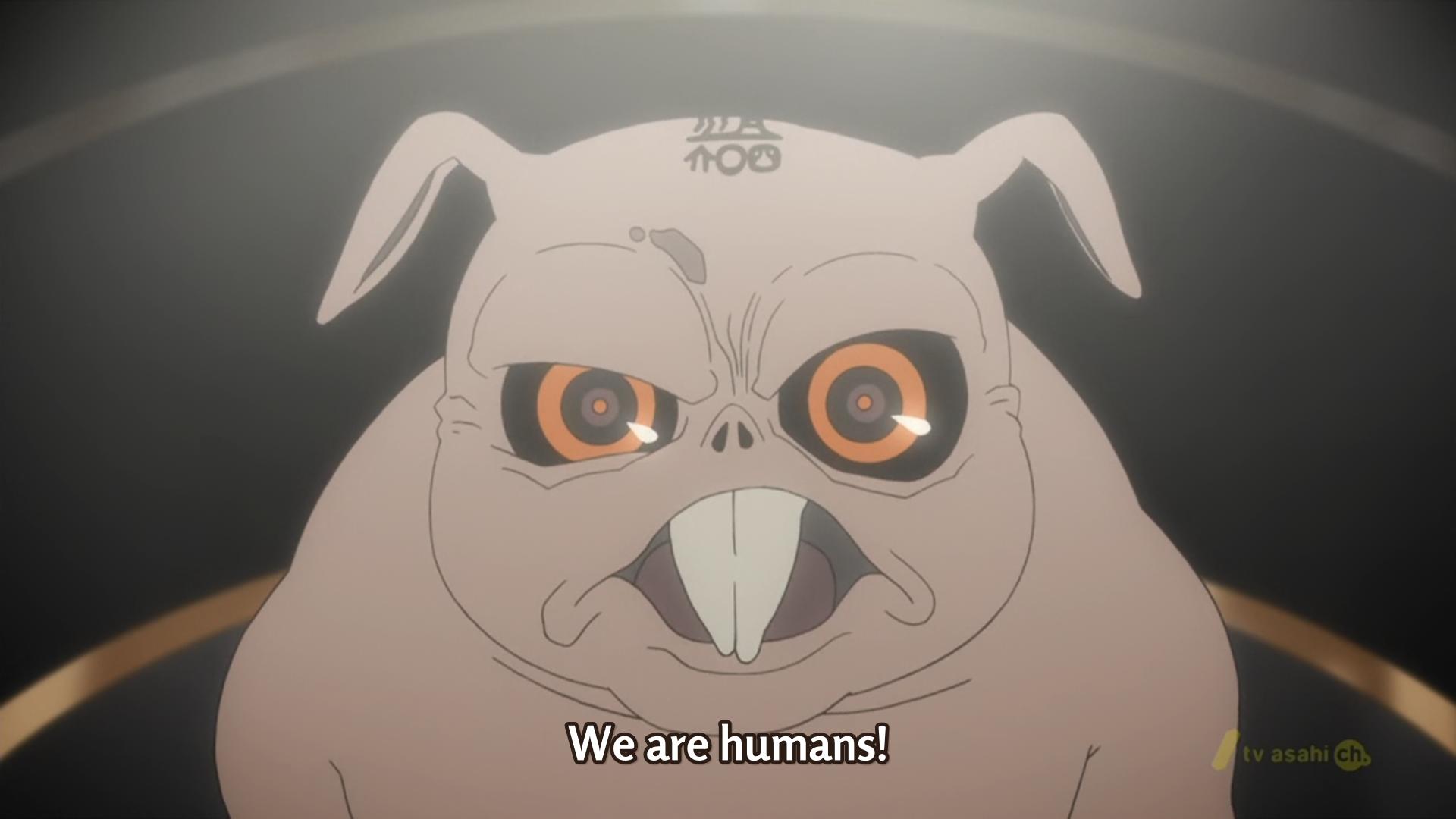Management: Been a while since I’ve done a general criticism post, eh?
Question:
Are shows starring adults meaningfully different from shows starring teenagers? How about college students versus high school students? I ask because in many shows (Working! versus Servant x Service, etc), the differences seem largely superficial – the humor and character interactions all carry over.
Bobduh:
They certainly ought to be! Adults, college-age people, and teenagers all have different central concerns, different degrees of experience, different manners of speaking – if characters are written so that they’re actually reflective of their experiences, shows about adults should naturally be fundamentally different from shows about teenagers. Plus, characters aside, there are many themes and narrative focuses that make the distinction particularly relevant. For example, Samurai Flamenco is very clearly a show about the disconnect between youthful ideals and adult realities – so yes, it wouldn’t really work as a show about teenagers. Cowboy Bebop is similar – its themes are echoes of those found in films like Seven Samurai, the story of the old soldier trying to find purpose in a world that has moved past him. That pretty much necessitates adult characters.
Granted, many shows don’t write characters that seem believably reflective of their experiences, and when you combine that with shows focused wholly on something like action or comedy, you can get situations where the characters’ age isn’t a meaningful distinction. But most of the time it really should be.
Management: That’s where the original response ended. But let’s see if we can dig into this a little more.
Adults versus adolescents is a nice, stark example of the fundamental principle here, but really these rules are the underpinnings of all character design. Characters do not exist in a vacuum – they shouldn’t just be collections of traits put together in a pleasing manner. They should be the culmination of their experiences, a meaningful reflection of their circumstances, upbringing, and formative experiences. Sure, various people do have fundamentally different dispositions, but everyone is also reflective of their environment. And when designing characters, making sure this applies is important for a variety of reasons.
First, it’s just true. Characters who are reflective of their experiences read as much more real than those who are simply the way they are because that’s how they were written. The audience will be much more likely to buy a character whose nature is reflective of things they can actually understand than one who is simply constructed of given pieces, regardless of how reasonable those pieces may be. And audience aside, if you want your work to reflect some inherent truth about people, skimping on character grounding is pretty much the worst choice you could make.
Second, and extending directly from this point, understanding the underpinnings of a character’s emotions, goals, and values is by far the most reliable path towards making the audience empathize with that character. Many authors try too hard to make their characters blandly likable – and honestly, this very often works. Audiences will often attach to characters they think they’d want to be, see as idealized versions of themselves, or simply would enjoy being actual friends with. But this approach inherently limits the audience of people who can empathize with those characters – when you keep a character loosely defined or merely pleasant like this, you rely on the audience investing in that character, applying some of themselves to fill out the gaps. And this will only work with people predisposed towards liking the particular personality, set of tropes, or fantasy that particular character represents. Actually, it’ll only work with the subset of that group that also don’t see this kind of character design (or at least this particular instance of it) as off-puttingly manipulative.
In contrast to this, establishing the formative events which have shaped a character leads to empathy through actual understanding. The audience may not personally like or personally relate to a character, but if the story articulates the sequence of events that led a base person to this fully-articulated personality, the audience can still empathize with why that person would make the choices they make. This is the foundation of that oft-repeated “good stories don’t have villains, they have antagonists” point. Very few people wake up one morning and think “today I’m going to meddle with some heroes” – antagonists should be people whose own circumstances, formative experiences, and goals lead them to naturally oppose the desires of the protagonists. Even if this doesn’t result in them being sympathetic characters (certainly not always possible, though a very powerful effect when appropriate), it should result in them being understandable human beings.
Finally, understandable circumstances are fundamental to character design because they’re also fundamental to drama. Even if character development isn’t your focus, and you’re crafting a story largely based on action, entertainment, or some high-minded thematic purpose, our human ability to empathize with constructed characters is possibly the most powerful storytelling tool we have, and discarding it means discarding potential resonance that can enrich virtually any style of narrative. No story is weakened by discarding character fundamentals – even if a given narrative doesn’t prioritize such things, that just makes the few details that do inform the characters carry that much more weight, as they become wholly responsible for acting as those gateway-to-empathy resonance points for the viewer. It takes virtually no time to ground a stone-cold badass in a formative experience or two, and the amount of work that small investment can do to attach an audience to a character is just an absurdly positive ratio.
Additionally, the necessary building blocks of good character design – this past-minded grounding I’ve been discussing – are some of the most useful materials available when trying to build an organic, personal narrative. Just as character background informs personality, that background can also be looped around to construct narrative, and having the things which inform a character’s personality come back to inform the narrative (confronting a past fear, retreading an old argument, etc) enriches both the character (whose fate we are interested in specifically because these old ghosts humanized them for us) and the narrative (lending it a satisfying holism, and grounding the spectacular in the personal). It turns a series of events into a story.

This doesn’t have to take a blunt, physical expression – protagonists don’t have to actually meet their dead fathers, they can simply be put through some other experience that forces them to confront the emotions that charged the first one. The various expressions this can take are pretty much beyond counting, but the base concept is not optional – tying the overt narrative to the emotional one is critical to creating an emotionally satisfying narrative.
Then, once this is all done, you can look back and realize you’ve forgotten the damn thematic throughline, and now you’ve gotta start all over again. Woops.




Ok, a bunch of notes, nuances, blah blah.
Let’s start with the ugly – I thought the image use, especially toward the end of the paragraph was a bit too heavy – the paragraph before last was quite short and was boxed by two images. I actually lost my train of thought there.
The ideas in this post build off of one another, and aren’t related to a specific show, so should be even more careful than usual about the inclusion of photos.
First, about the age thing, and before anyone jumps down my throat – I’ve been born in ’85, served in the army, went through university and worked for a few years. Most people don’t change that much after school, and you can see high school politics everywhere, including with people who have long since entered the 5th decade of their lives. So to me, adult-informed shows aren’t really about how adults think/behave, but about how adults have to face the different situations in adult lives. That’s why when I described shounen versus seinen, to me the true “Adult-aimed” stuff is often slice-of-life, where you get to see the issues adults have to deal with.
Of course, this isn’t always true, but it’s a small thing I noticed.
You used the term empathy, then your paragraph about characters who are stand-ins for the characters basically described “Sympathy”. I wish you’ve used the term, since it was so fitting :3 – Antagonists are an example of something that is usually empathetic rather than sympathetic.
Now, since your 2nd answer on your post about emotional manipulation was an answer to me, this isn’t an entirely surprising thing, but it’s all emotional manipulation, and has to do with buildup that feels earned versus that which doesn’t feel earned – you talk about earning it within this piece, but there are things that often bug me, so I’m going to add some nuances (objections?).
Oftentime we have characters have 1-2 formative events, and these events explain the whole of their existence – that is emotional manipulation and flimsy, it’s having one dimensional characters, and it happens all too often. Characters are shaped by everything around them, and naturally stories can’t have that, so they sort of force-feed you the character building and growth. Naturally, there’s not much you can do about it, and it also has upsides – such as me being able to feel sad about stories when I have issues with it in real life, as there isn’t the deluge of information that stops you from constructing a narrative.
The other part of it is how anime literally force-feed you the changes and character-growths, and don’t trust you in the same way as most books do trust you; you get the flashback to the formative event about 2-3 minutes before it’s relevant (if not mere seconds), and if it happened say, 10 episodes ago, then you’re going to have a flashback to it in the middle of it being relevant now… and that actually makes it feel more fake, more manufactured as well as being groan-inducing due to how little trust we’re given in deciphering events and characters – I mean, part of the thing is that if the characters are truly relatable, truly multi-layered, then it’s up to people to disagree whether something is truly enough to have them act the way they did or what caused them to act in a certain manner – only automatons have such rigid controls that you can be for sure what event caused what reaction and how in all instances.
Finally, I’m not 100% sold on how much you stress this tool above all else, I think this has a lot to do with what gets your appreciation in the media you consume.
That’s an excellent, well thought out response. A tip of my hat. A small quibble I’d add on the matter of ‘force-feeding.’ it’s true that anime in particular can be prone to hammering in points for the viewer’s benefit (if no more so than the average popcorn blockbuster or CW drama). However, I think the comparison to books is rather unfair. There’s a basic difference in the language of the mediums and what the audience is trained to look for, with conservation of detail being much more stringent in a visual story. Planting foreshadowing for a reveal or a character nuance, for example, works very differently from page to screen – a reader can simply flip back a few chapters to remind themselves, while a viewer of a week to week show (even as the culture begins to lean toward binge watching) has a longer time period and a controlled time over which they’re consuming the story (as opposed to being limited only by reading speed). Forgetting that Bob wore a red shirt in episode 2, which is now an heirloom of his estranged father, doesn’t make a viewer stupid.
Additionally, visual stories don’t have the leisure of descriptive text or inner monologues. Just look at the struggles From the New World (pictured above) had with relating the legendary amounts of dumped exposition in a visually interesting fashion.
Then there’s the issue of limited animation. A vocal performance can tell a great deal, but it’s rare for shows to have the animation budget to give subtle nonverbal cues through a character’s body language (see Tiger & Bunny for a rare case of this done excellently). So anime works from an even deeper deficit than live action television.
I guess what I’m saying is, while there are definitely storytelling structures and tropes that all narratives can be beholden to, it’s sort of unfair to rush to criticism without giving due consideration to *how* a story is told.
…and yeah, I’d love the percentage of anime that respects my intelligence to outweight the cookie cutter character types. Just a little. It’s all I ask.
Alrighty, let’s go down the list!
> Images
Yeah, possibly one too many. Removing the Bebop image would be the obvious choice, though I do like presenting examples this way.
> Age
We might just disagree here. I certainly know people whose personalities don’t really seem reflective of their age, and base personalities may not change, but I’d write a teenage, college-age, or working adult-age character significantly differently. But I agree that genre can end up largely dictating how meaningful of a distinction this really is.
> Empathy versus sympathy
We covered this one! There’s obviously enough material for other full articles in the distinction between empathy and sympathy as you’ve defined them, and that gets into the various reasons people watch shows in the first place.
-edit- To clarify, Guy and I discussed this on twitter, where he defined Empathy as more the general ability to understand why someone would feel a certain way, whereas Sympathy was specifically the viewer’s ability to step into their shoes and personally identify with them. In which case sympathy would be the ideal term to describe that subset of characters I describe as existing as an idealized version of the viewers themselves, instead of just any character with an understandable personality.
> 1-2 formative events
This is definitely a common thing, and obviously a tremendous oversimplification for the sake of narrative coherency. But I don’t think I actually have a big issue with it, mainly because I don’t feel those events need to do any more than paint in broad strokes. A character’s every quirk doesn’t have to be dictated by these formative events for them to come across as understandable reactions to those experiences. And the elements of their personality that aren’t relevant to their emotional throughline can be drawn from either base personality or the larger nature of their world and immediate environment.
> Anime is not subtle about these shifts
Certainly agree with that. I think some shows are, and I appreciate it, but most do hit the beats extremely heavily. They can still be effective, but I am virtually never a fan of the moments when a show flashback-reviews the reason you’re supposed to feel the way you hopefully do about the scene you’re currently watching.
> This tool above all else
I’m stressing it here because it’s what I’m writing about at the moment, but there’s certainly much more to storytelling and character writing than this. I gotta articulate one principle at a time!